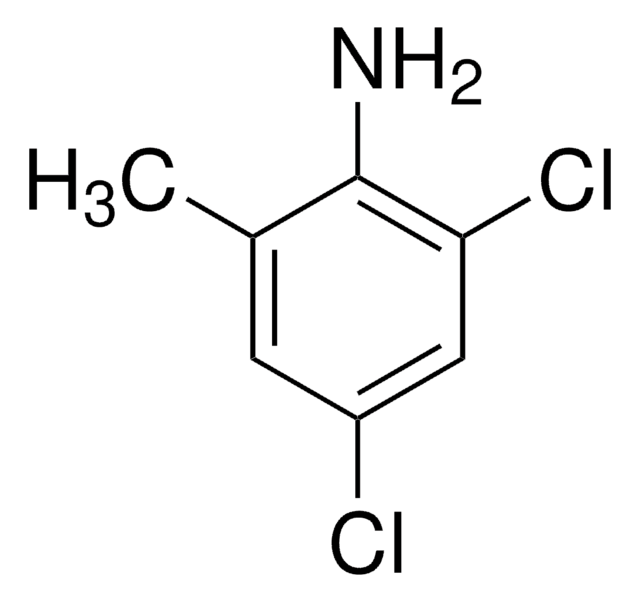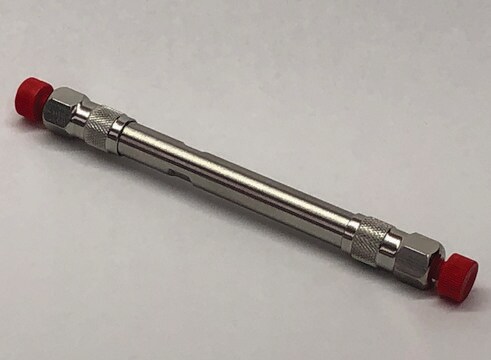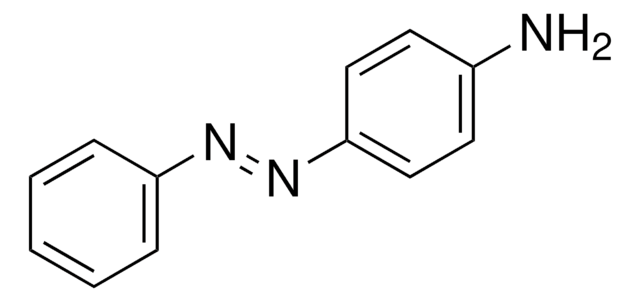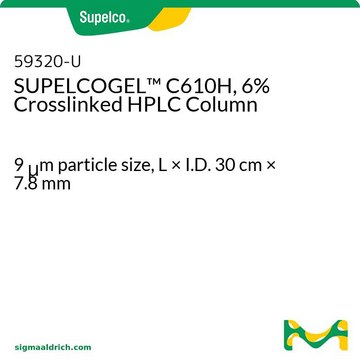565324-U
Ascentis® RP-Amide (5 µm) HPLC Columns
L × I.D. 15 cm × 4.6 mm, HPLC Column
Synonym(s):
RP-Amide Reversed-Phase Chromatography Column
About This Item
Recommended Products
product name
Ascentis® RP-Amide HPLC Column, 5 μm particle size, L × I.D. 15 cm × 4.6 mm
material
stainless steel column
Quality Level
Agency
suitable for USP L60
product line
Ascentis®
feature
endcapped
manufacturer/tradename
Ascentis®
packaging
1 ea of
extent of labeling
19.5% Carbon loading
parameter
≤70 °C temp. range
400 bar pressure (5801 psi)
technique(s)
HPLC: suitable
LC/MS: suitable
L × I.D.
15 cm × 4.6 mm
surface area
450 m2/g
surface coverage
2.7 μmol/m2
impurities
<5 ppm metals
matrix
fully porous particle
silica gel high purity, spherical
matrix active group
amide, alkyl phase
particle size
5 μm
pore size
100 Å
operating pH range
2-8
application(s)
food and beverages
separation technique
reversed phase
Looking for similar products? Visit Product Comparison Guide
General description
Ascentis RP-Amide is a new generation ultra low bleed, embedded polar group (EPG) phase that provides orthogonal selectivity and increased resolution for HPLC and LC-MS analysis of polar compounds. The Ascentis RP-Amide is the first choice in embedded polar group HPLC phases.
Application
- Preparation of mixed-mode stationary phase for separation of peptides and proteins in high-performance liquid chromatography: Highlights the application of Ascentis® RP-Amide HPLC column in the development of mixed-mode stationary phases, further demonstrating its versatility in handling diverse biochemical compounds and its pivotal role in advancing pharmaceutical and proteomic research (Alharthi et al., 2022).
- On-line hyphenation of solid-phase extraction to chromatographic separation of sulfonamides with fused-core columns in sequential injection chromatography: Showcases the efficacy of Ascentis® RP-Amide HPLC columns in environmental analysis, specifically for the detection of contaminants in complex matrices. This study underscores the column′s robustness and high-resolution capabilities, making it invaluable in environmental laboratories (Batista et al., 2015).
- Determination of zearalenone and its metabolites in endometrial cancer by coupled separation techniques: Demonstrates the critical role of Ascentis® RP-Amide HPLC columns in clinical research, particularly in the sensitive and accurate measurement of biomarkers in cancer diagnostics. The column′s superior retention for polar compounds proves essential for precise biomedical analyses (Gadzała-Kopciuch et al., 2011).
Features and Benefits
- Excellent retention and peak shape for polar compounds
- 100% aqueous compatibility
- Ultra low bleed, LC-MS compatible
- Unique selectivity
Legal Information
Application
guard cartridge
Choose from one of the most recent versions:
Already Own This Product?
Find documentation for the products that you have recently purchased in the Document Library.
Customers Also Viewed
Articles
Reference Standards for Analyzing Polyphenol Catechins
Protocols
Mass Spectral Column Bleed in Nitrogen-Containing Polar-Embedded HPLC Stationary Phases
Separation of (L)-Dehydroascorbic acid; L-Ascorbic acid 20 μg/mL
Separation of Resorcinol 50 mg/mL; Pyrocatechol; 2-Methylresorcinol; 4-Methylcatechol; 2,5-Dimethylresorcinol 50 mg/mL; 3-Methylcatechol 50 mg/mL; 4-Nitrocatechol 50 mg/mL
Protocol for HPLC Analysis of Carotene Compounds on Ascentis® RP-Amide
Chromatograms
application for HPLCapplication for HPLCOur team of scientists has experience in all areas of research including Life Science, Material Science, Chemical Synthesis, Chromatography, Analytical and many others.
Contact Technical Service







